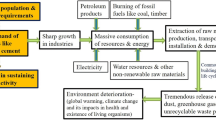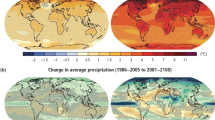Conclusions
-
1.
The gypsum salinized soils (belozem) of Erevan cannot be used as the bases of buildings and structures without taking special measures. The most effective of these measures is the complete elimination of constant seepage of water through such soils by constructing around the perimeter of each building a closed watertight wall extending to the solid impervious bedrocks on top of which is placed an impervious covering over the entire area of the building at the level of the lower surface of the foundations.
-
2.
Consolidation and damping of belozem do not eliminate its seepage leaching and do not prevent loss of strength.
Owing to the considerable inhomogeneity of belozem with respect to water permeability preconstruction consolidation of these soils by flooding also cannot provide uniform and sufficiently complete removal of water-soluble gypsum from its composition, and consequently cannot prevent further slump-type settlements upon flooding by waters during operation of the buildings and structures.
-
3.
The requirements and recommendations on elimination of sources of flooding of the base soils of buildings and structures during their operation are ineffective owing to the presence of a multitude of difficultly controllable sources of flooding both in the building itself and beyond its limits.
Similar content being viewed by others
Literature cited
V. V. Mikheev and S. I. Sinel'shchikov, “Construction of bases and foundations on salinized soils,” Byull. Stroit. Tekh., No. 3 (1973).
V. V. Mikheev and V. P. Petrukhin, “Construction properties of salinized soils used as bases in industrial construction and civil engineering,” Osn. Fundam. Mekh. Gruntov, No. 1 (1973).
V. P. Petrukhin and G. V. Boldyrev, “Calculation of piping settlement of bases composed of gypsofied soils,” in: Summaries of the Reports of the All-Union Conference. Foundation Engineering under Complex Soil Conditions [in Russian], Alma-Ata (1977).
R. N. Arutyunyan, “Characteristics of gypsum salinized soils and their behavior in a slump-prone stratum of the bases of buildings and structures,” in: Summaries of the Reports of the All-Union Conference. Foundation Engineering under Complex Soil Conditions [in Russian], Alma-Ata (1977).
Author information
Authors and Affiliations
Additional information
Translated from Osnovaniya, Fundamenty i Mekhanika Gruntov, No. 3, pp. 23–25, May–June, 1978.
Rights and permissions
About this article
Cite this article
Arutyunyan, R.N. Deformations of gypsofied soils in the bases of building and structures in erevan. Soil Mech Found Eng 15, 183–185 (1978). https://doi.org/10.1007/BF02132797
Issue Date:
DOI: https://doi.org/10.1007/BF02132797




